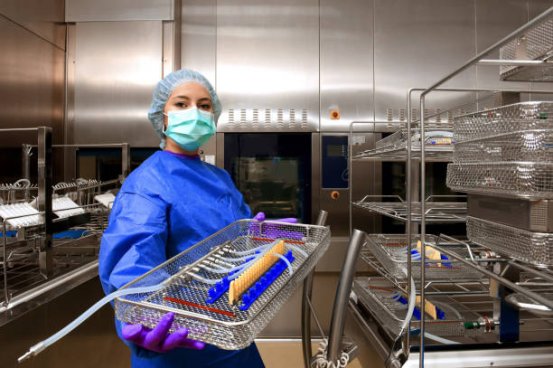Understanding Cleanroom Services: Ensuring Precision and Safety in Controlled Environments
Cleanroom services are essential in industries where even minimal contamination can disrupt operations. From pharmaceuticals to electronics, these controlled environments maintain strict air purity and contamination protocols, enabling the production of high-quality products under optimal conditions.
Cleanroom services are essential in industries where even minimal contamination can disrupt operations. From pharmaceuticals to electronics, these controlled environments maintain strict air purity and contamination protocols, enabling the production of high-quality products under optimal conditions.

Overview of Cleanroom Services
Cleanroom services encompass specialized processes designed to sustain environments with minimal airborne particles and contaminants. Essential for sectors where cleanliness directly impacts quality and safety, these services support operations in semiconductor manufacturing, pharmaceutical production, and aerospace assembly. The goal is to consistently achieve contamination control standards throughout all operational stages.
Technicians employ advanced cleaning methods, precise chemicals, and specialized equipment to maintain required purity levels. Air filtration systems and environmental controls complement surface cleaning, ensuring particles remain at minimal levels.
Importance of Cleanroom Standards
Maintaining rigorous standards is critical. Sensitive manufacturing processes, such as electronics assembly, can be disrupted by microscopic particles, causing defects or failures. In biotechnology and life sciences, contamination control is essential for product safety and efficacy. Controlled environments also reduce cross-contamination, ensure regulatory compliance, and uphold product reliability, safeguarding an organization’s reputation.
Types of Cleanrooms
Cleanrooms are classified based on the maximum allowable particulate concentration per cubic meter, ranging from ISO 1 (highest cleanliness) to ISO 9. Each type requires specific air handling, gowning, cleaning protocols, and maintenance routines.
Specialized cleanrooms include:
-
Semiconductor cleanrooms, critical for microscopic hardware precision.
-
Pharmaceutical cleanrooms, requiring sterile conditions for safety.
-
Aerospace and defense cleanrooms, supporting precise assembly with minimal particulate interference.
Key Components of Cleanroom Operation
Effective operations rely on high-efficiency particulate air (HEPA) filters, advanced air-handling systems regulating temperature, humidity, and pressure, and meticulous surface cleaning. Routine maintenance, scheduling of cleaning cycles, and continuous environmental monitoring preserve cleanroom integrity. Calibration of particle counters and airflow sensors ensures accurate, real-time feedback and rapid corrective action.
Cleaning Procedures and Techniques
Cleaning follows systematic protocols, including initial dusting and wet wiping with residue-minimizing compounds. Compatible cleaning agents, ionized water, or antimicrobial solutions are selected based on surface and environmental requirements. Disposable materials prevent cross-contamination, while manual and automated cleaning systems ensure coverage of critical areas, minimizing contamination risks.
Personnel Training and Safety
Technicians receive extensive training on contamination protocols, chemical handling, and PPE usage. Standard operating procedures dictate precise steps for entering and exiting cleanrooms, including gowning and tool handling. Safety measures address chemical exposure, ventilation, and protective equipment use, with regular retraining and certification maintaining operational efficiency.
Industry Applications
Cleanroom services are vital across microelectronics, semiconductor production, biotechnology, pharmaceuticals, medical device manufacturing, aerospace, and defense. They also support R&D laboratories, ensuring experiments remain uncontaminated and results reproducible.
Advancements in Cleanroom Technology
Technological innovations are transforming cleanroom services. ULPA filters enhance air purity beyond HEPA standards, IoT sensors provide real-time monitoring, and robotic cleaning systems improve precision while limiting human entry. New surface materials resist bacterial adhesion and simplify maintenance, extending intervals between deep cleans while maintaining standards.
Compliance and Certification
Adherence to ISO cleanliness standards, internal audits, and third-party certification ensures consistent performance. Comprehensive documentation of cleaning cycles, monitoring, and personnel training supports regulatory compliance and prevents costly penalties.
Future Outlook and Considerations
The cleanroom industry will continue evolving with technological advances, new materials, and stricter contamination control needs. Sustainability is shaping practices through eco-friendly cleaning agents and energy-efficient systems. Future trends may include more automation, enhanced monitoring, and AI integration to predict and mitigate contamination risks.
In summary, cleanroom services are indispensable for high-tech industries requiring pristine environments. Through rigorous protocols, technological integration, and adherence to international standards, these services ensure controlled environments support high-quality production, research, and operational excellence.
